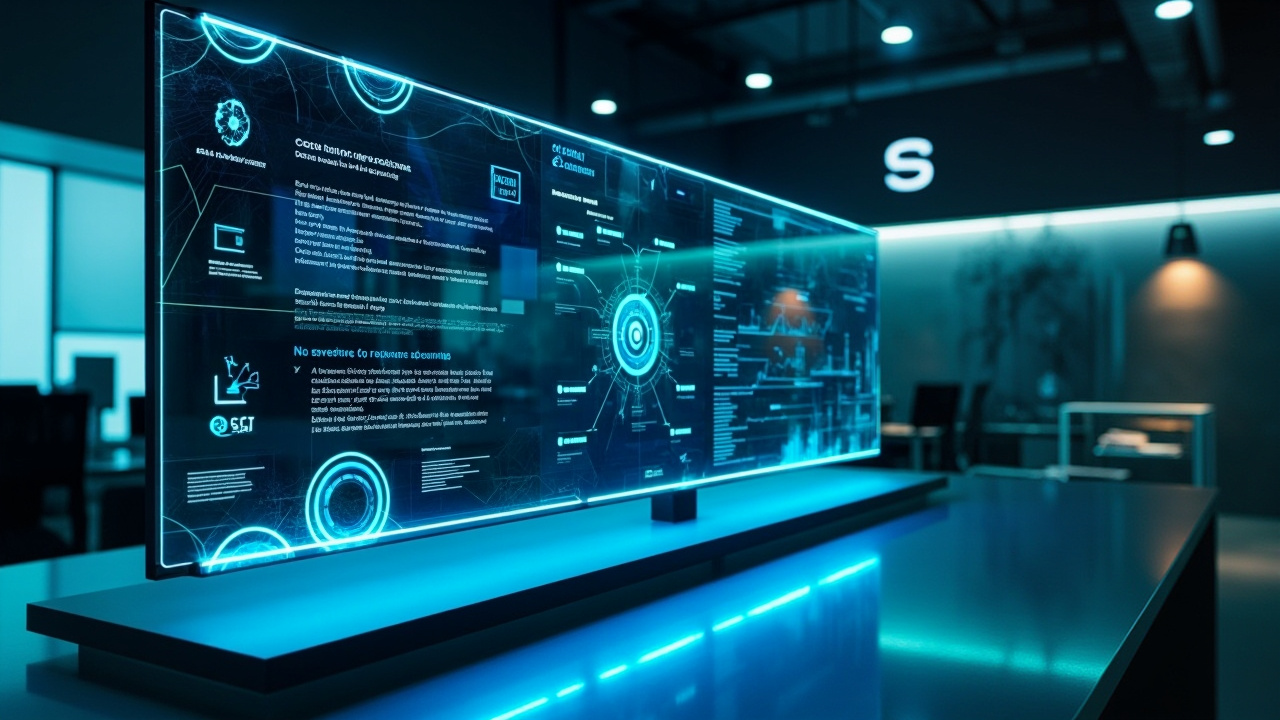In the ever-evolving world of software development, one constant remains: the need for rigorous and effective software testing. As applications grow in complexity, the challenges associated with ensuring their quality and reliability increase exponentially. Traditional testing methods, once the backbone of quality assurance, now often struggle to keep pace with the demands of modern software environments. This article delves into the intricacies of software testing, explores emerging trends, and introduces innovative solutions like GenQE that are revolutionizing the field.
Software testing is more than a procedural step in development; it is the guardian of quality, the barrier between potential chaos and seamless user experience. Yet, the pain points are numerous: from the labor-intensive nature of manual testing to the pitfalls of inadequate test coverage. As organizations strive to release products faster and with greater precision, the pressure mounts to find solutions that can address these challenges effectively.
What can readers expect from this exploration? A comprehensive understanding of software testing’s current landscape, insights into cutting-edge methodologies, and practical advice on integrating innovative tools into their workflows. As we traverse this terrain, the narrative will naturally weave in GenQE, an AI-powered platform that exemplifies the future of software testing.
The Evolution of Software Testing

The journey of software testing is marked by significant transformations, reflecting broader technological advancements. Initially, testing was a manual, laborious process, heavily reliant on human intervention and prone to errors. The emergence of automated testing tools heralded a new era, offering increased speed and efficiency. However, even automation has its limitations, particularly in adapting to the dynamic nature of modern software systems.
From Manual to Automated Testing
The shift from manual to automated testing marked a pivotal moment in software quality assurance. Automated testing tools provided a means to execute repetitive tasks with precision and speed, freeing up valuable human resources for more strategic activities. Yet, the transition was not without its challenges. Automated tests required significant upfront investment in scripting and maintenance, often leading to bottlenecks when systems evolved or changed rapidly.
For instance, consider a scenario in a major financial institution where manual testing was the norm. The process was not only time-consuming but also prone to human errors, leading to critical bugs slipping through to production. With the introduction of automated testing tools, the institution was able to reduce the testing time from weeks to days. However, they soon encountered the challenge of maintaining test scripts, which frequently broke due to minor UI changes. This is where advanced solutions like GenQE’s self-healing automation can make a difference by automatically adjusting test scripts, thus ensuring continuity and minimizing maintenance efforts.
“Automation applied to an inefficient operation will magnify the inefficiency.” – Bill Gates
The Role of AI in Modern Testing
AI’s integration into software testing is not merely a trend; it’s a necessity. AI enhances test coverage and accuracy, optimizing processes that were previously cumbersome and error-prone. By analyzing vast datasets, AI can predict potential failures, adapt to changes swiftly, and identify anomalies with unprecedented accuracy.
Take GenQE, for instance. Its AI-driven test generation capabilities analyze software requirements and user behavior to automate the creation of comprehensive test cases. This shift significantly reduces the reliance on manual test design, enhancing both coverage and efficiency. A real-world example is a tech startup that implemented GenQE to automate their test case creation. This not only improved their test coverage by 50% but also allowed their QA team to focus on exploratory testing, uncovering edge cases that were previously missed.
Challenges in Traditional Testing Methods

Despite the advancements in testing methodologies, traditional approaches still face numerous obstacles. These challenges underscore the need for innovative solutions that can complement and enhance existing practices.
Limitations of Manual Testing
Manual testing, while thorough, is inherently slow and resource-intensive. It relies heavily on human judgment and can be inconsistent. In fast-paced development cycles, manual testing becomes a bottleneck, hindering timely releases and impacting overall product quality.
Consider a healthcare software company that relied heavily on manual testing. The complexity and regulatory requirements of their software demanded meticulous testing, which was painstakingly slow and led to delays in product updates. These delays not only affected their competitive edge but also posed risks in a highly regulated industry.
The Pitfalls of Automated Testing
Automated testing, though faster, presents its own set of challenges. The initial setup and ongoing maintenance of test scripts can be time-consuming and costly. Scripts are often fragile, breaking with even minor changes in the software. This fragility necessitates frequent updates, diverting resources from more strategic initiatives.
“The greatest challenge in software testing is not identifying the defects, but ensuring that the system can handle unexpected changes and still perform seamlessly.”
The introduction of AI-driven solutions like GenQE’s self-healing automation addresses these pain points by automatically adjusting test scripts when UI elements change, minimizing maintenance efforts and reducing downtime. This capability is particularly beneficial in dynamic environments such as e-commerce platforms, where UI changes are frequent and rapid response is critical to maintaining seamless user experiences.
Balancing Speed and Quality
The pressure to deliver software quickly often leads to compromises in quality. Traditional testing methods may not always align with the agile methodologies prevalent in today’s development environments. This misalignment can result in inadequate test coverage and increased risk of defects slipping into production.
In a competitive market, a startup aiming to disrupt the fintech industry faced this very challenge. The need for rapid releases to capture market share was in constant tension with the requirement for high-quality, secure software. By adopting a balanced approach that included intelligent tools like GenQE, they were able to streamline testing processes, achieving faster releases without sacrificing quality.
Emerging Trends in Software Testing

As the software industry continues to evolve, so too does the landscape of software testing. Emerging trends are reshaping how organizations approach quality assurance, offering new opportunities and challenges.
Shift to Continuous Testing
Continuous testing is a natural extension of the agile and DevOps movements. It emphasizes the need for testing to occur throughout the software development lifecycle, rather than as a discrete phase. This approach ensures that quality is built into the product from the outset, rather than being an afterthought.
For example, a leading SaaS provider implemented continuous testing as part of their DevOps strategy. By integrating testing into every stage of the development process, they achieved a 60% reduction in defects post-release and significantly improved their deployment frequency. Continuous testing allowed them to catch issues early, reducing the cost and time associated with bug fixes.
The Rise of AI and Machine Learning
AI and machine learning are revolutionizing software testing by enabling more intelligent and adaptive testing processes. These technologies can analyze vast amounts of data to identify patterns and predict potential issues, offering a proactive approach to quality assurance.
GenQE exemplifies this trend with its AI-powered defect detection. By leveraging machine learning, it identifies patterns in test results to detect anomalies and potential defects early in the development cycle, preventing critical issues from reaching production. This capability is particularly useful in industries like finance and healthcare, where early detection of defects can prevent significant financial losses and ensure compliance with stringent regulations.
“The future of testing lies in automation, but not in the traditional sense. It’s about intelligent, adaptive systems that can learn and evolve with the software.”
Test Automation Frameworks
The development of sophisticated test automation frameworks is another key trend. These frameworks provide a structured approach to automation, facilitating easier integration with CI/CD pipelines and enhancing collaboration across teams.
A global retail company utilized a modern test automation framework to streamline their testing processes across multiple teams and geographic locations. This enabled seamless collaboration and consistency in testing practices, leading to improved product quality and customer satisfaction.
Best Practices for Effective Software Testing

To navigate the complexities of software testing successfully, organizations must adopt best practices that align with modern methodologies and tools. These practices ensure that testing processes are efficient, comprehensive, and adaptable.
Emphasizing Test Coverage and Risk Analysis
Effective software testing requires a balance between comprehensive test coverage and targeted risk analysis. Prioritizing test cases based on potential risk and impact ensures that critical areas are thoroughly vetted, while resources are allocated efficiently.
A leading logistics company applied risk-based testing to prioritize their test cases. By focusing on high-risk areas, they were able to optimize their testing efforts, reducing the time spent on low-impact tests and significantly improving their defect detection rate.
Integrating Intelligent Tools
The integration of intelligent tools, such as GenQE, enhances testing processes by automating repetitive tasks and providing insights that would otherwise be difficult to obtain. These tools enable teams to focus on high-value activities, such as exploratory testing and quality improvement.
For instance, a gaming company adopted GenQE to enhance their testing processes. The platform’s AI-driven insights allowed them to identify and resolve complex bugs more efficiently, leading to smoother game launches and improved user feedback.
Establishing Continuous Feedback Loops
Continuous feedback loops are essential for maintaining quality throughout the development lifecycle. By incorporating feedback from testing into development, teams can make informed decisions and address issues proactively.
“In an era of rapid development, feedback is not just beneficial; it’s essential. Real-time insights drive quality and innovation.”
A telecommunications company implemented continuous feedback loops in their testing strategy. This approach enabled them to quickly adapt to user feedback and changing market demands, resulting in a more agile and responsive development process.
Fostering Collaboration Across Teams
Collaboration between development, testing, and operations teams is critical. By working together, these teams can ensure that testing processes are aligned with overall project goals and that quality is prioritized at every stage.
A multinational tech corporation restructured their teams to enhance cross-functional collaboration. This alignment fostered a culture of shared responsibility for quality, leading to more cohesive and efficient testing practices.
Case Studies: Real-World Applications of Innovative Testing

The theoretical benefits of innovative testing methodologies and tools are well-documented, but how do they manifest in real-world applications? Examining case studies provides valuable insights into their practical impact.
Case Study 1: Accelerating Time to Market
In a rapidly evolving tech industry, a major software company faced challenges with lengthy testing cycles that delayed product releases. By integrating GenQE into their testing processes, they automated repetitive tasks and prioritized test execution based on risk analysis. This approach not only reduced testing time by 30% but also improved defect detection rates, enabling faster, more reliable product launches.
The company found that by utilizing GenQE’s smart test execution, they could focus their efforts on high-impact areas, reducing the time spent on less critical tests and accelerating their time to market. This strategic approach allowed them to stay ahead of competitors and respond swiftly to market demands.
Case Study 2: Enhancing Test Coverage and Accuracy
A financial services firm sought to improve the accuracy of their testing processes following a series of costly production defects. By leveraging GenQE’s AI-driven test generation, they expanded their test coverage significantly. The platform’s intelligent prioritization ensured that high-impact areas were tested first, resulting in a 40% reduction in post-release defects.
The firm was able to identify previously undetected edge cases, significantly reducing the risk of critical defects impacting their customers. This proactive approach not only improved customer satisfaction but also bolstered the company’s reputation for reliability and innovation.
“Real-world success stories highlight the transformative power of innovative testing solutions, offering a blueprint for organizations seeking to enhance quality and efficiency.”
Case Study 3: Reducing Maintenance Efforts
A leading e-commerce platform struggled with the maintenance of fragile test scripts that frequently broke due to UI changes. By implementing GenQE’s self-healing automation, they reduced script maintenance efforts by 50%, allowing teams to focus on strategic initiatives and innovation.
The e-commerce platform experienced fewer disruptions in their testing processes, enabling smoother product launches and more consistent user experiences. This reduction in maintenance efforts also freed up resources, allowing the team to invest in new features and enhancements.
The Future of Software Testing: Embracing Innovation

As we look to the future, the trajectory of software testing is clear: it is a landscape defined by innovation, intelligence, and adaptability. Organizations that embrace these qualities will not only survive but thrive in an increasingly competitive environment.
The Role of AI and Automation
AI and automation will continue to play a pivotal role in shaping the future of software testing. These technologies enable testing processes to be more adaptive, efficient, and accurate, allowing organizations to meet the demands of modern software development.
A global automotive company is pioneering the use of AI-driven testing to ensure the reliability and safety of their autonomous vehicles. By integrating AI into their testing framework, they can simulate countless scenarios and edge cases, enhancing both safety and performance.
The Importance of Continuous Improvement
The future of software testing is not static; it requires ongoing adaptation and improvement. By fostering a culture of continuous improvement, organizations can ensure that their testing processes remain relevant and effective.
“The journey of software testing is one of perpetual evolution, driven by innovation and the unyielding pursuit of quality.”
An innovative tech startup exemplifies this mindset by continuously iterating on their testing practices. By embracing feedback and leveraging new technologies, they maintain a competitive edge and deliver exceptional products to their users.
Preparing for Future Challenges
As software systems become more complex, the challenges associated with testing will undoubtedly evolve. Organizations must be prepared to address these challenges head-on, leveraging innovative tools and methodologies to maintain quality and reliability.
A pharmaceutical company is preparing for future challenges by integrating AI and machine learning into their testing processes. This forward-thinking approach ensures that they can adapt to new regulations and market demands, maintaining their position as an industry leader.
Conclusion: Navigating the Path Forward

Software testing is at a crossroads, poised to embrace a future defined by innovation and intelligence. The journey from manual testing to AI-driven solutions like GenQE illustrates the transformative power of technology in enhancing quality assurance processes. As organizations navigate this path, the key lies in adopting best practices, embracing emerging trends, and integrating intelligent tools that align with their strategic goals.
For those looking to enhance their testing processes, the opportunity is clear: explore innovative solutions, such as GenQE, and harness their potential to improve quality, reduce costs, and accelerate development cycles. By doing so, organizations can ensure that they remain at the forefront of software development, delivering products that meet and exceed user expectations.
The path forward is one of continuous evolution and improvement. By embracing innovation and leveraging cutting-edge tools, organizations can transform their testing processes, ensuring that they are well-equipped to meet the challenges of tomorrow.
Call to Action: Explore the tools and methodologies discussed in this article, and consider how integrating solutions like GenQE can transform your software testing processes, enhancing quality and efficiency.
Discover More Innovative Solutions
Want to learn more about the tools and technologies discussed in this article? Explore how these innovations can be tailored to your specific needs and workflow requirements.
Our team of experts is available to answer your questions and provide personalized insights into how modern solutions like GenQE can address your specific challenges.
If the link above does not work, please visit: https://calendly.com/dm-csimplifyit/30min?month=2025-05